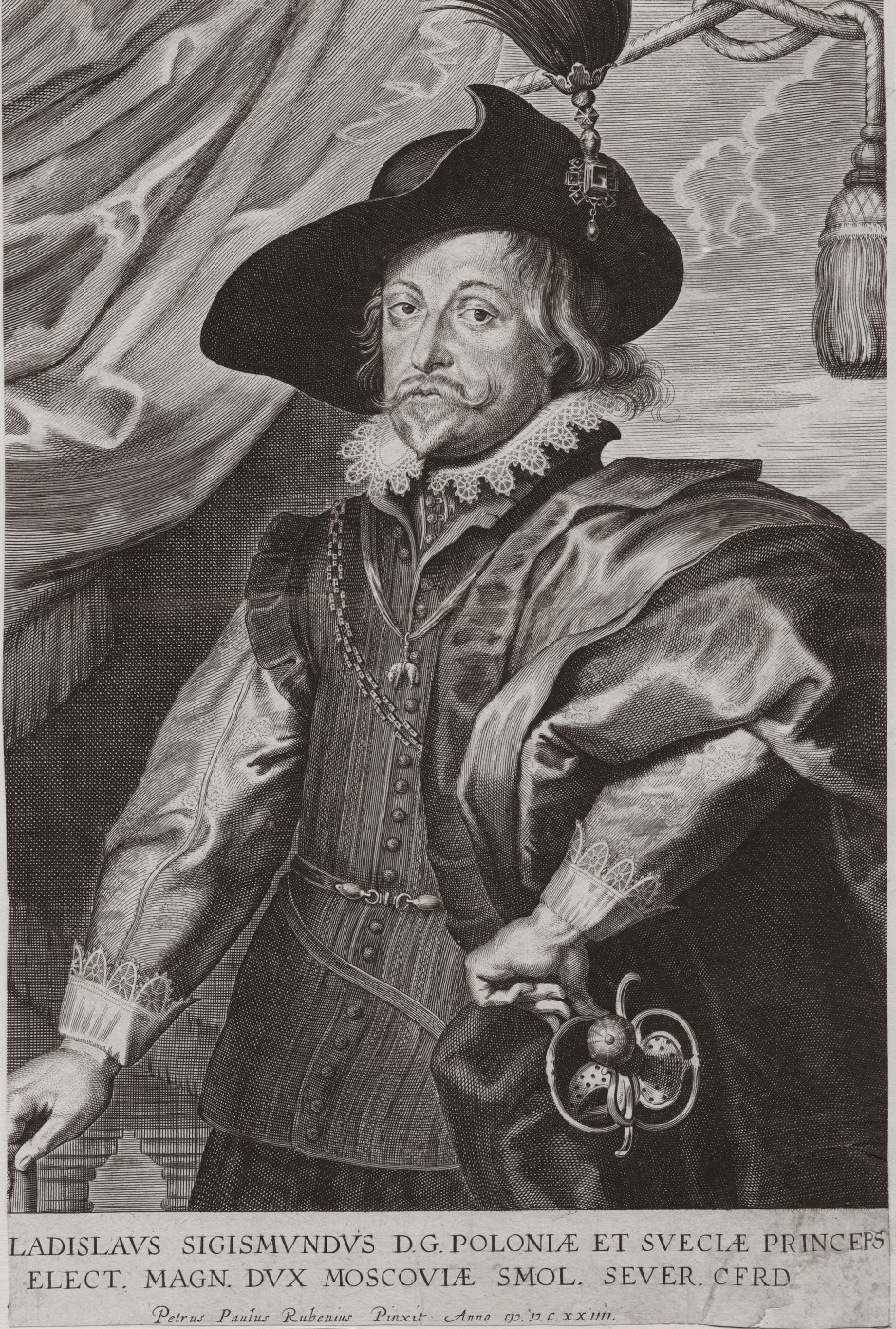Portrait of Władysław IV Vasa. 1624–1634.

From the engraved original of P.Pontius after the original painting by P.P.Rubens. 1624.
Engraving. 312 x 195.
The left and right edges of the engraving are cropped. The lower right corner is lost.
Under the image: [W]LADISLAVS SIGISMVNDVS D.G. POLONIAE ET SVECIAE PRINCEPS ELECT. MAGN. DVX. MOSCOVIAE SMOL. SEVER. CFRD. [DUX]; below: Petrus Paulus Rubenius Pinxit Anno CD. D. C. XX IIII.
The author of the engraving is determined by means of comparison with a similar engraving of J. van der Heyden, which is kept in the National Library of Poland (Warsaw).
The original of P.P. Rubens is in Poland, in Wawel Royal Castle (Krakow).
Inv. G 372.
Literature: Nagler, Bd. 6, p. 169; Schneevoogt, C G Voorhelm. Catalogue des estampes gravées d'après P.P.Rubens. – Haarlem, 1873. – p. 172, № 157; Rooses Max. L'oeuvre de P. P. Rubens; histoire et description de ses tableaux et dessins. Vol. 1–5. – Anvers, 1886-1892. – Vol. 4, p. 282, № 1078.
Rubens, Pieter Paul (1577, Siegen – 1640, Antwerp) – flemish painter, one of the most prominent representatives of the Baroque period, diplomat, collector.
Władysław IV Vaza (1595–1648) – king of Poland and Grand Duke of Lithuania (1632–1648). In 1610, Prince Władysław took the oath of Moscow boyars as a Russian tsar. In October 1612, his government was overthrown. The following year, Mikhail Fyodorovich Romanov was elected as tsar. Until 1634, Władysław continued to use the title of Grand Duke of Moscow.
Views: 4463